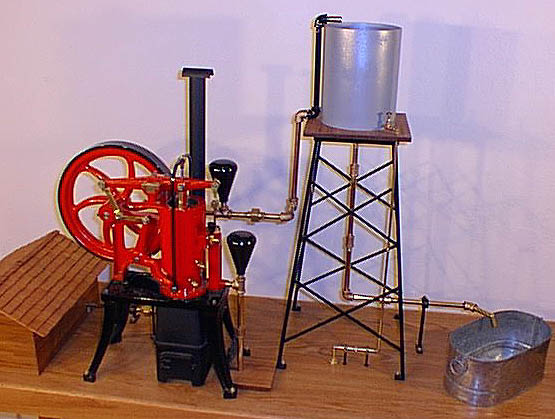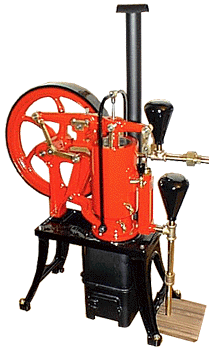Model Engines
Scale Model of a 1905 Olds Hit and Miss Engine
Operational 1/2 Scale Model of a 1 1/2 Horse Power Gasoline Engine originally manufactured by the
Olds Gasoline Engine Works, Lansing, Michigan
1 7/8” Bore X 2″ Stroke – Approx. 3/4 H.P.

Scale Model of an 1895 Rider-Ericsson Hot-Air Engine
Operational 1/3 Scale Model of a Hot-Air Pumping Engine
originally manufactured by the
Rider-Ericsson Engine Co., New York, New York
2″ Bore X 1″ Stroke – Small fractional H.P.


Scale Model of an 1895 Mery Explosive Engine
Operational 1/4 Scale Model of a Double Acting, 6 Cycle Gas Engine originally manufactured by
Michael L. Mery and his foundry in Chico, California
1 1/2” Bore X 3″ Stroke – Small fractional H.P.


This engine is a true 6 cycle using a 3:1 cam gear ratio. The extra two cycles, a “purge intake” and “purge exhaust”, were incorporated in the design to clear the combustion chambers of all spent gases before introducing the next air/fuel charges. It utilizes both sides of the piston in seperate combustion chambers, thus acting as a two cylinder engine while only having one physical piston and cylinder. There are no cams used with this design, but 2 eccentrics are used, one to operate the exhaust valves and the other to operate some of the ignition system. The model operates exactly the same as the only known existing full size engine, though it can be noted that several things shown on the original patent papers no longer exist on the original engine, and thus were left out of the model. The machinist has the option to extract what information he can from the patent papers and fabricate the missing items. The kit is now complete and running, requiring more than 1400 machine and construction hours to complete the display. For now, check out the Mery page here.
